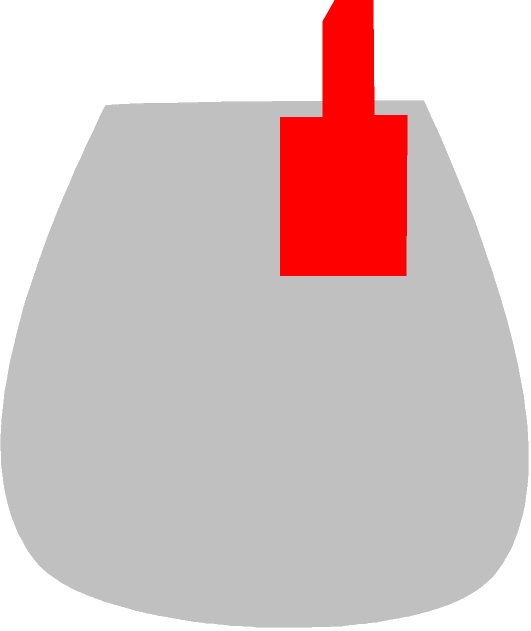
Babyproofing can be a real hassle. Much worse than you thought when you stopped by the hardware store and picked up some babyproofing supplies. I'll start with babyproofing toilets.
There are a number of toilet latches available for babyproofing. If you check around on the web, you'll find some reviews, and most of them rate the Gerber toilet lock the highest. I'd give it a B -. However, the other toilet latches out there all rate D or F. In particular, I'd say that the SafetyFirst latch is a total waste of money and time, and the Kidco one isn't much better. The Safety First one is so complicated, your bladder will explode before you can figure out how to get it off to pee, and it's really not all that sturdy or babyproof. (Other SafetyFirst devices can be quite good, however.) If looking on the Web, Babyproofing Plus carries the Gerber lock, and CyberBabyMall carries something that looks similar, They're cheap, and easy to ruin during installation, so get at least one more than you need. I recommend that you read this entire little article before installing, and as always, measure twice and cut once (well, measure about five times and mount with mounting tape once).
The Gerber toilet lock is really a quite elegant design and, if installed correctly, can work well and last for a long time. However the instructions leave a lot to be desired, and the main point of this diatribe is to provide some advice on installation.
The Gerber toilet lock consists of two chunks of plastic connected with a hinge and a spring, a piece of mounting tape, and a label for under the seat ("close the seat, you idiot!"). You press the base onto the toilet seat, where it sticks, courtesy of the mounting tape. Out of the back sticks a lever. When you try to lift up the seat, the end of the lever impacts the back of the toilet, preventing the lid from lifting. If you rotate the lever to the side while lifting the toilet seat, it comes up nicely. And when you put the seat back down, the spring on the hinge makes the lever rotate back into place. Once it's installed it works quite well.
BUT MAKE SURE before you get ready to mount the lock that the toilet seat bolts or screws are nice and tight. If the toilet seat wiggles, the lock won't work.
BUT there are a few caveat emptors (caveats emptor? emptor caveats?). First, the mounting tape is permanent and VERY strong. If you mount it wrong, you've ruined the toilet seat lock and will have to throw it away and get a new one. Other mounting tape won't work, it's not strong enough. [And, depending on your toilet configuration, even the very strong mounting tape they provide may not be enough for a strong toddler. Toilet seats are relatively cheap, so I used a drill and some wood screws to mount a lock to one of our toilet seats, the one with the curved back.]
AND, the foam on the mounting tape is very soft, and so if you mount it wrong and try to take it off there will be gooey sticky stuff all over your toilet seat. You will have to remove this before trying again. I recommend some stuff called Goo Gone, available at hardware stores, for removing the mounting tape residue. If you do have to use Goo Gone, make sure you use some alcohol to clean off all the Goo Gone before trying to mount another toilet seat lock.
AND, there's just one little problem with the design. The Gerber toilet seat lock is designed solely for simple, standard toilet seats with a flat (not curved) seat and a standard flat, straight back to the toilet. Of the last four toilets which I've tried to babyproof, only one of them was such a standard design. Sigh.
DON'T DESPAIR. It is possible, although difficult, to modify the toilet seat lock for other designs and shapes. However, it won't work with a padded seat. There are designs for padded seats, but they don't work nearly as well. I recommend that if you have a padded seat, replace it with a solid, flat seat (they're not very expensive) from your local hardware store and get a Gerber lock.
If your toilet seat isn't flat on top, but curves up a bit at the back, you CAN still use the Gerber toilet seat lock.
You'll need to trim the back of the base to fit the curve of your toilet seat. This is not easy to do by eye, but with a less-than-$10 tool called a Contour Gauge (available at your local hardware store, or online from www.sears.com, search for Contour Gauge), you can basically trace the curve of the back of the toilet seat, then using a laundry marker such as a Sharpie, mark the curve on the base. Then you can use a saw (I used a hacksaw) to trim the base so it will fit on your toilet seat properly.
WARNING: on some curved toilet seats, the lever will jam against the edge of the seat if you mount the lock in the middle of the back of the seat. BEFORE you stick it on with mounting tape, please check the lever for free movement. I found that on two of the three toilets in my new house, I had to mount the toilet seat lock far to the right on the back of the seat to get the lever to clear.


One of the toilets in our new house not only required the two modifications above -- trimming the base to fit a curved seat, and mounting to the right so the lever would clear -- but still required more modification because of a curved back for the toilet. I found I had to angle the base about 30 degrees to allow it to work properly.
One final note: make sure that the end of the lever is just about 1/4" from the back of the toilet. If it's further away, especially once it gets to about1/2" away, it's possible for the lever to to sometimes open the toilet seat with the lock in place, because the lever will bend downward. You need to have the end of the lever close to the toilet back to ensure the lock really works.

Good luck!